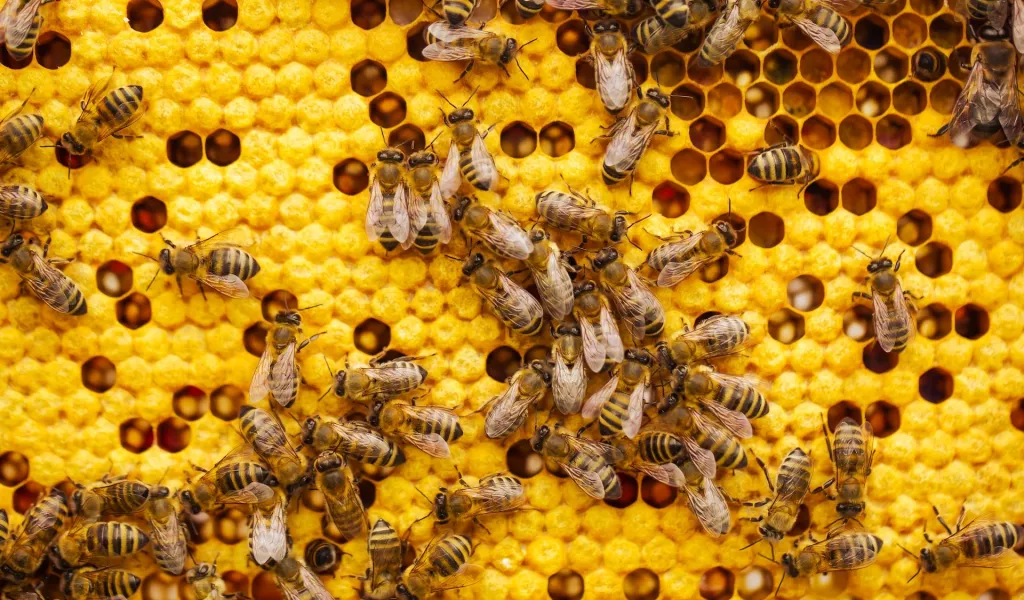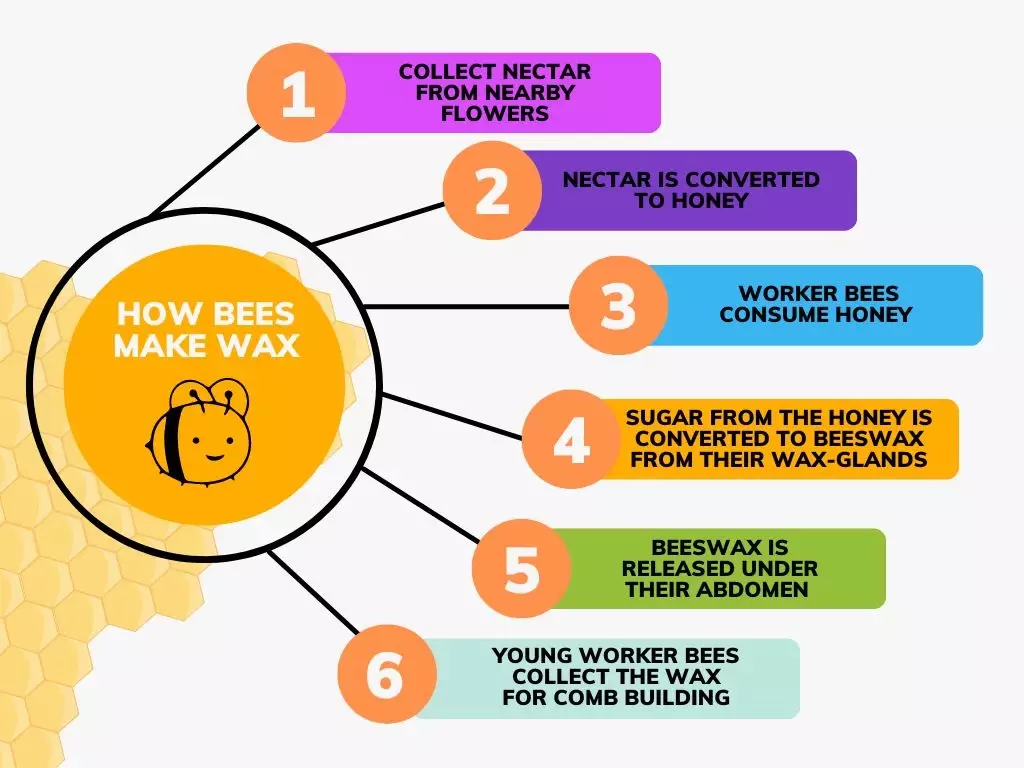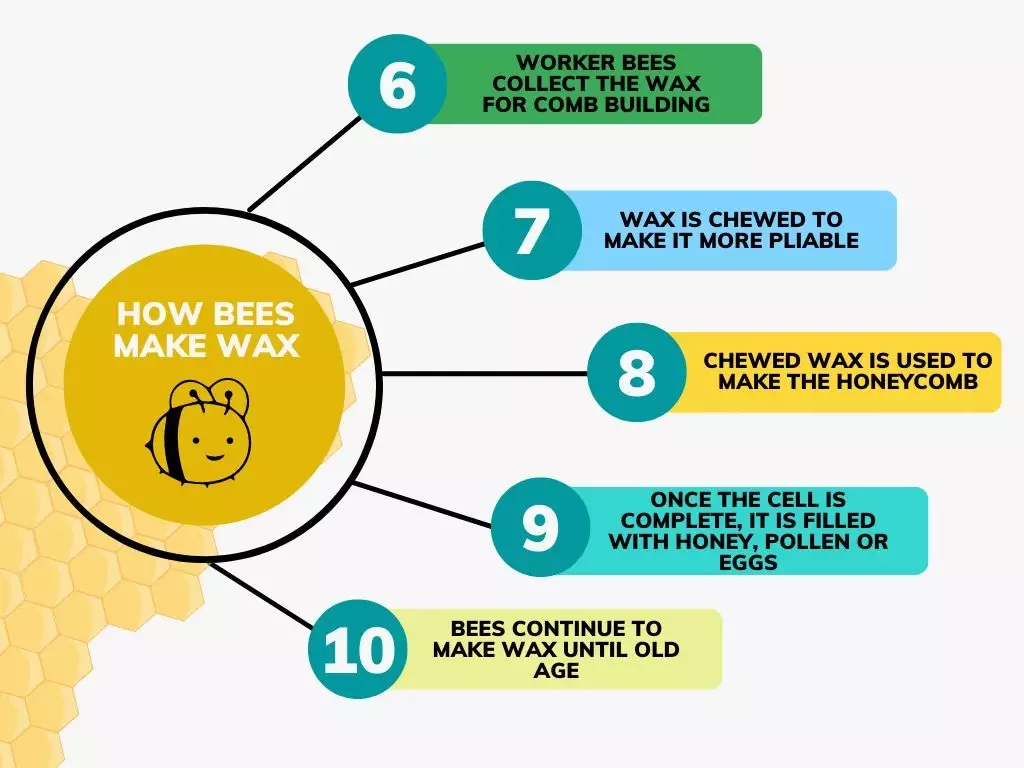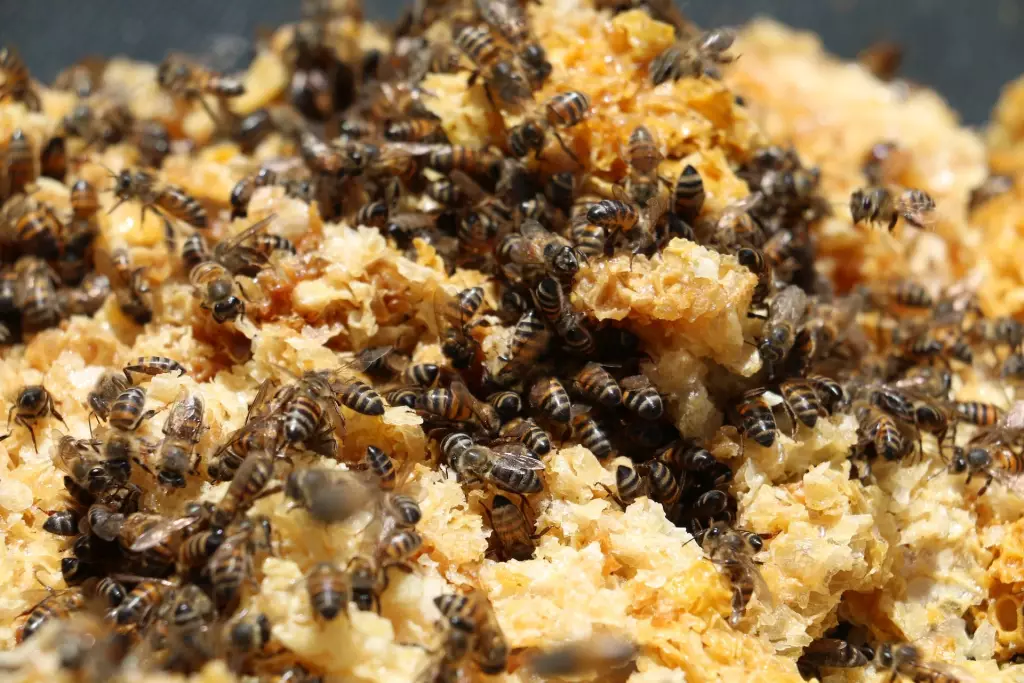How Do Bees Make Wax? (Step-by-Step with Diagram)
Beeswax is a popular product with versatile uses. It’s used to build the beehive and the honeycombs where bees store their honey. But how do bees make wax?
Bees have wax glands on their abdomens. When honey is consumed, the sugar is converted into beeswax. The wax is then excreted out from their abdomen through tiny pores to form tiny wax flakes.
It’s worth noting that the wax that is secreted by bees is actually a liquid. It hardens as it cools down and is exposed to the air. This process is cyclical and bees will continue and harvest wax as they need it to maintain and repair their comb.
Summary
- Adults bees have wax glands on the underside of the abdomen
- Bees eat honey to convert the sugar from the honey into beeswax
- Beeswax is used to build and repair their comb
- As adult bees get older, their wax glands shrink and produce less wax
- It takes approximately 12 hours for a single bee to produce 8 tiny wax scales

On this page:
How Do Bees Make Wax?
To make beeswax, worker bees increase the hive’s temperature to at least 33 degrees Celsius. This activates the wax glands found in their abdomen. The wax glands convert the sugar from the honey they’ve eaten into beeswax. The wax oozes out from tiny pores to form scales on their abdomen.
The other worker bees collect these scales and chew on them to form the right consistency for comb building. The measurements for wax scales are about 3mm across and 0.1mm thick. According to expert research, about 1100 scales are needed to produce 1 gram of wax.
At its peak production phase, a healthy worker bee can generate around 8 tiny scales of wax in a 12-hour period. And as the worker bee gets older, its wax glands shrink and the task is passed on to younger bees.
For a colony to build their hive, it needs approximately 1,000 wax layers to make 1 gram of beeswax. The design of the honeycomb allows the bee colony to make the most of their storage space while using the least amount of wax possible to construct its hive.
A Step-by-Step Process of How Bees Make Wax

Step One: Worker bees collect nectar from nearby resources and bring it back to the hive. After they develop into adults, they begin producing wax.
Step Two: Nectar is stored in the honeycombs and slowly converted into honey. Fully grown worker bees will have 4 pairs of special wax-secreting glands located on the undersides of their abdomens.
Step Three: As honey becomes ripe, worker bees will consume large amounts to create energy to produce the wax.
Step Four: Sugar from the honey is extracted and their glands secrete a liquid wax, which forms into 8 tiny wax scales.
Step Five: The scales are released from the underside of the bee’s abdomen.

Step Six: These scales are collected by other worker bees on their hind legs.
Step Seven: The worker bees then chew the wax to soften it and make it more pliable.
Step Eight: The chewed wax is used to construct the honeycomb, which is used for storing honey and raising the colony’s young.
Step Nine: Once the wax cells are built, the worker bees will fill them with honey, and pollen or eggs in some of the cells.
Step Ten: The worker bee will continue to produce wax throughout its life, but production decreases as the bee reaches the end of its lifespan. Eventually, the task is handed over to younger bees.
Beeswax Components and Characteristics
Beeswax is a complex mixture of esters of fatty acids, including over 200 other minor components. Fresh beeswax has a light yellow color, primarily due to the presence of pollen, but as time goes on, it becomes a golden yellow due to exposure to bees and propolis.
Despite its color change, beeswax maintains its stability. It remains solid through a wide range of temperatures. Its melting point is 64.5 degrees Celsius. It only becomes brittle if the temperature drops below 18 degrees Celsius.
This means that the honeycomb can endure temperature changes within seasons. This is crucial for the survival of the bee colony through both summer and winter climates.
Most Common Beeswax Applications
Bees produce wax to build their honeycomb, which serves as a home for their young and a place to store honey. The honeycomb is also essential to a colony’s survival. It provides the colony with a safe and protected environment while regulating the temperature inside the hive during the winter months.
Bees also use wax to seal and preserve the honey once the cells are filled. Capped cells also protect the honey from being eaten by other insects.

One surprising reason why bees make wax is that beeswax is found to have antimicrobial properties. That means the wax can help prevent the growth of bacteria, fungus and other pathogens that are harmful to the colony.
Overall, bees produce wax not only for structural and storage purposes but also to protect and preserve the colony’s health and well-being.
What Makes Beeswax so Special?
Beeswax is special because it is a natural wax produced by bees. It’s made from nectars and processed inside the hive. Beeswax is different from other waxes, such as paraffin wax, in many ways.
First, it’s a natural and renewable resource, while other waxes are derived from fossil fuels. It also acts as a protective coating against external damage against moisture loss.
Second, it is non-toxic and hypoallergenic, making it safe for use in products that come into contact with skin, such as lotions and lip balms. It is great against inflamed skin and has antioxidant components.
Lastly, beeswax also has unique purifying properties that can help remove impurities and pollutants from the air when burned, making it a natural air purifier. It has a high melting point. It holds its shape well, making it a great choice for candles.
Average Hive Production Amount & Timing
Beeswax is made by the colony throughout the year, but the amount produced depends on the needs of the colony at different times.
During the spring and summer, when the colony is actively growing and expanding, the bees will produce more wax to build new comb for storing honey and raising their brood. As the colony grows, more space is needed for the additional bees, and more wax is produced to create new comb cells.
In the fall and winter, when the colony is not growing as much, the bees will produce less wax. The colony begins to focus on maintaining and repairing the existing comb, rather than expanding to new ones.
Additionally, beeswax production is also affected by the availability of nectar and pollen. If the colony has access to high amounts of resources then the bees will produce more wax. If not, the production will decrease.